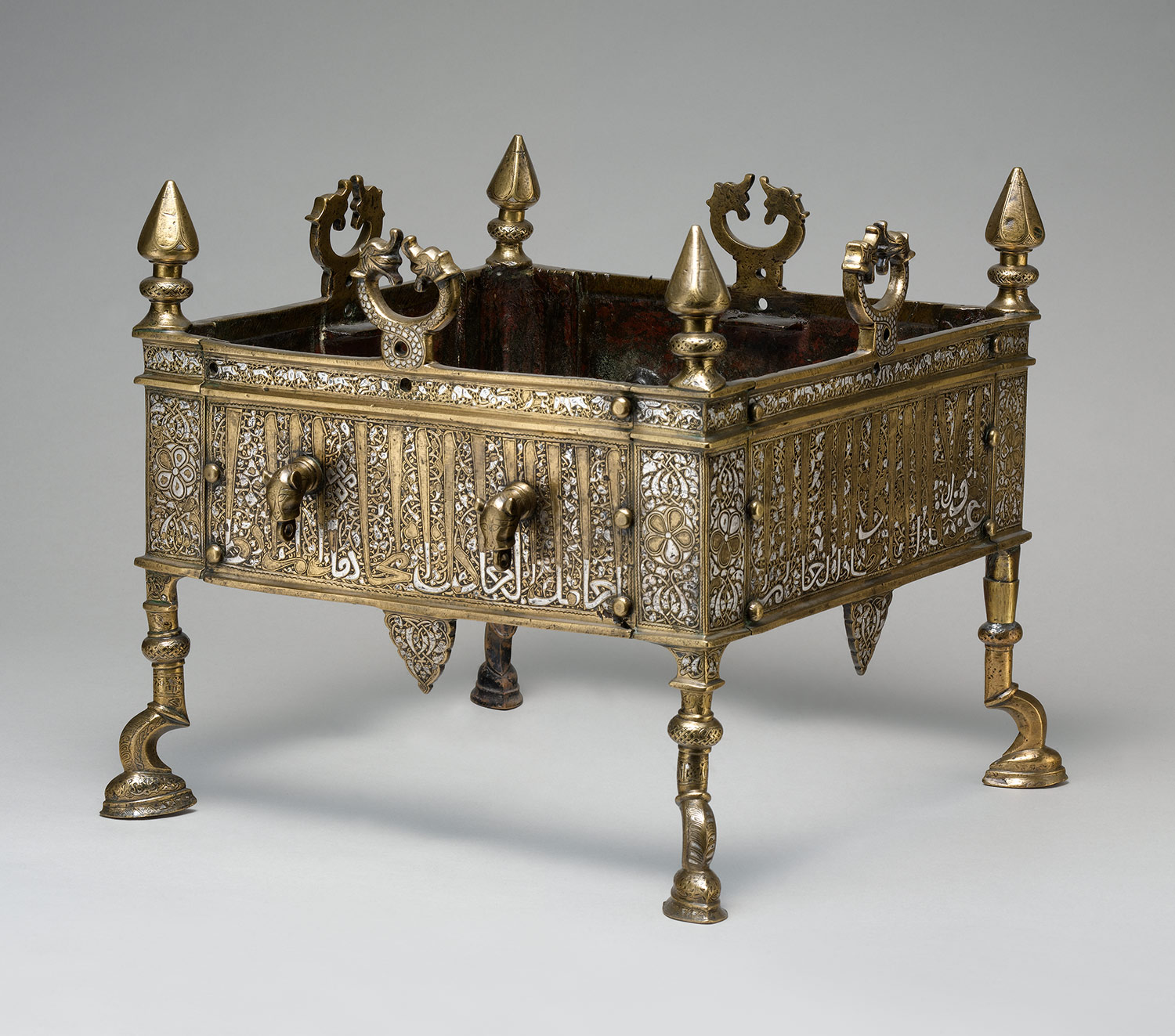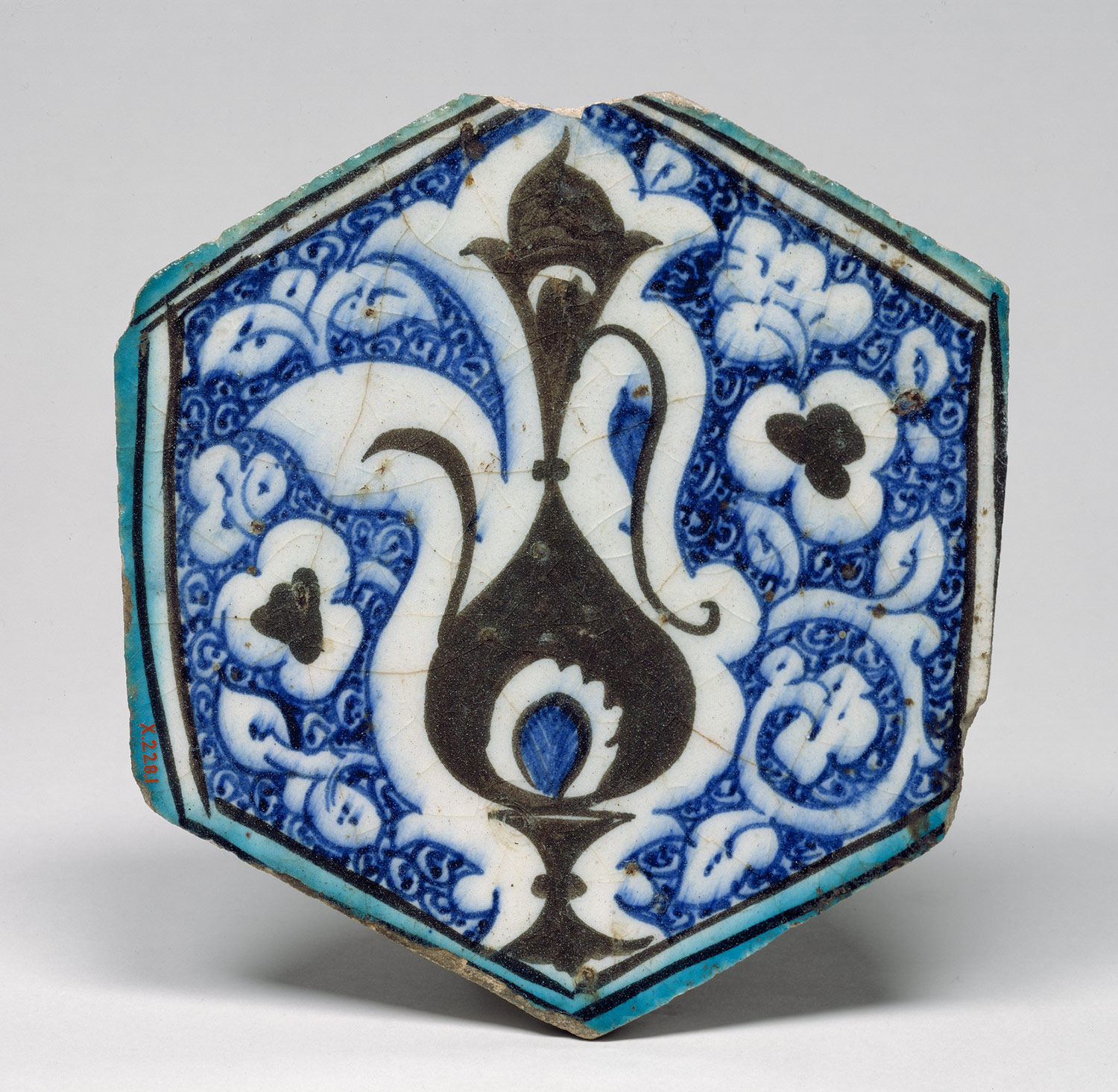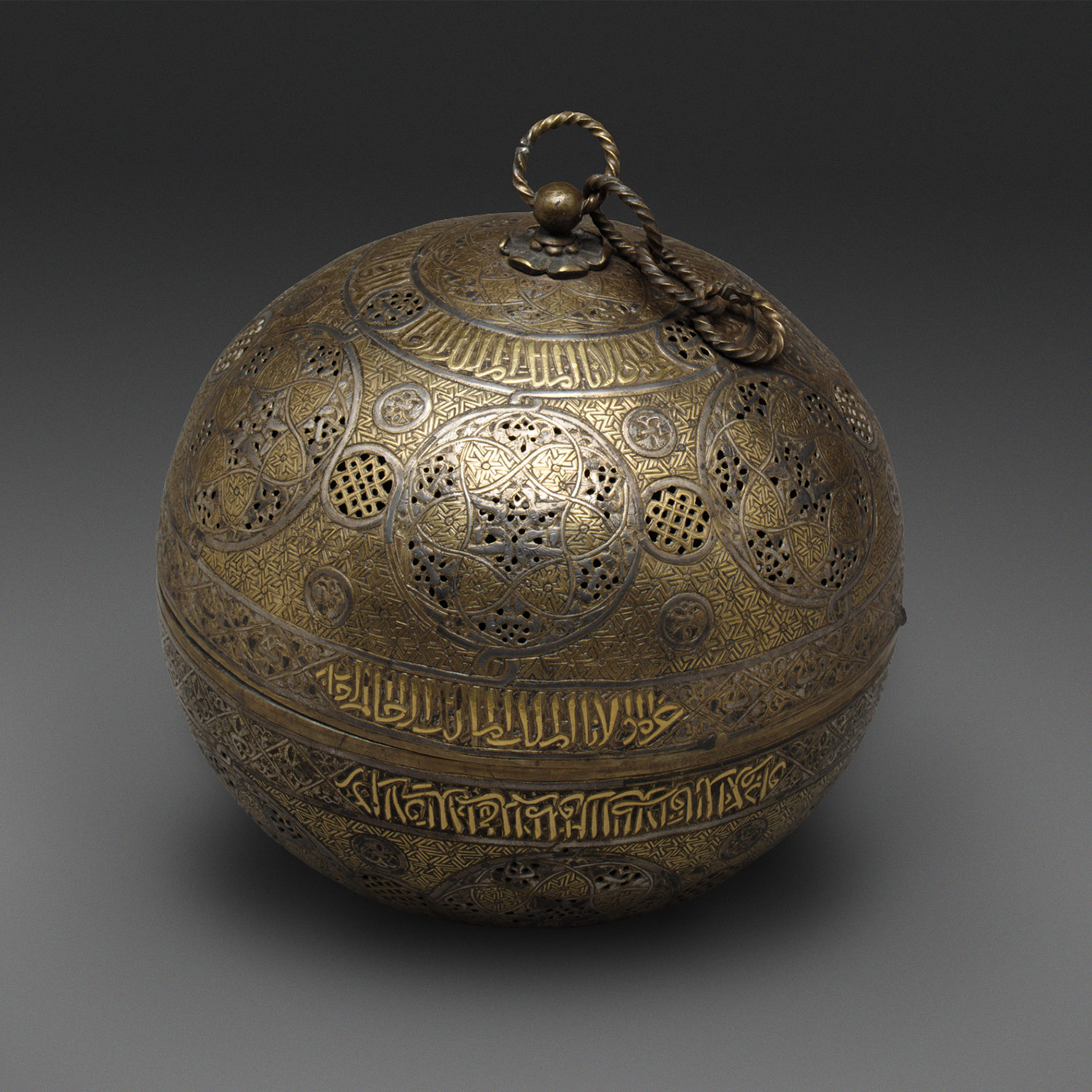The Mamluk sultanate (1250–1517) emerged from the weakening of the Ayyubid realm in Egypt and Syria (1250–60). Ayyubid sultans depended on slave (Arabic: mamluk,
literally "owned," or slave) soldiers for military organization, yet
mamluks of Qipchaq Turkic origin eventually overthrew the last Ayyubid
sultan in Egypt, al-Malik al-Ashraf (r. 1249–50) and established their
own rule. Their unusual political system did not rely entirely on family
succession to the throne—slaves were also recruited into the governing
class. Hence the name of the sultanate later given by historians.
Following the defeat of Mongol armies at the Battle of cAyn
Jalut (1260), the Mamluks inherited the last Ayyubid strongholds in the
eastern Mediterranean. Within a short period of time, the Mamluks
created the greatest Islamic empire of the later Middle Ages, which
included control of the holy cities Mecca and Medina. The Mamluk
capital, Cairo, became the economic, cultural, and artistic center of
the Arab Islamic world.
Mamluk history is divided into two periods based on different dynastic lines: the Bahri Mamluks (1250–1382) of Qipchaq Turkic origin from southern Russia, named after the location of their barracks on the Nile (al-bahr, literally "the sea," a name given to this great river), and the Burji Mamluks (1382–1517) of Caucasian Circassian origin, who were quartered in the citadel (al-burj, literally "the tower"). After receiving instruction in Arabic, the fundamentals of Islam, and the art of warfare, slaves in the royal barracks were manumitted and given responsibilities in the Mamluk hierarchy.
Brazier of Sultan al–Malik al–Muzaffar Shams al–Din Yusuf ibn 'Umar, Mamluk period (1250–1517), second half of 13th century
Egypt
Brass; cast, chased, inlaid with silver and black compound; H. 13 7/8 in. (35.2 cm), W. 15 1/2 in. (39.4 cm), Max D. 16 3/8 in. (41.6 cm)
Edward C. Moore Collection, Bequest of Edward C. Moore, 1891 (91.1.540)

Tile, first half of 15th century; Mamluk
Syria
Composite body with underglaze paint; W. 6 5/8 in. (16.8 cm)
Museum Accession (x.228.1)
The background of tightly coiled spirals and the use of black, blue, and turquoise underglaze pigments betray the Syrian provenance of this tile. The lidded ewer on a stand, a form that is still popular in the Middle East, is a recurrent motif based on contemporary metal examples.

Pierced globe, Mamluk period (1250–1517), late 13th–early 14th century
Syria, Damascus
Brass; spun and turned, pierced, chased, inlaid with gold, silver, and black compound; H. 6 1/4 in. (15.9 cm), H. with chain 8 3/4 in. (22.2 cm), Diam. 6 1/4 in. (15.9 cm)
Gift of J. Pierpont Morgan, 1917 (17.190.2095a,b)
Spherical incense burners, few of which have survived, were hung from the ceiling or from the vault of an arch, and the ingenious system of gimbals (also called cardan joints) inside the sphere stabilized the burning incense in the swinging container.
Mamluk history is divided into two periods based on different dynastic lines: the Bahri Mamluks (1250–1382) of Qipchaq Turkic origin from southern Russia, named after the location of their barracks on the Nile (al-bahr, literally "the sea," a name given to this great river), and the Burji Mamluks (1382–1517) of Caucasian Circassian origin, who were quartered in the citadel (al-burj, literally "the tower"). After receiving instruction in Arabic, the fundamentals of Islam, and the art of warfare, slaves in the royal barracks were manumitted and given responsibilities in the Mamluk hierarchy.

Brazier of Sultan al–Malik al–Muzaffar Shams al–Din Yusuf ibn 'Umar, Mamluk period (1250–1517), second half of 13th century
Egypt
Brass; cast, chased, inlaid with silver and black compound; H. 13 7/8 in. (35.2 cm), W. 15 1/2 in. (39.4 cm), Max D. 16 3/8 in. (41.6 cm)
Edward C. Moore Collection, Bequest of Edward C. Moore, 1891 (91.1.540)

Tile, first half of 15th century; Mamluk
Syria
Composite body with underglaze paint; W. 6 5/8 in. (16.8 cm)
Museum Accession (x.228.1)
The background of tightly coiled spirals and the use of black, blue, and turquoise underglaze pigments betray the Syrian provenance of this tile. The lidded ewer on a stand, a form that is still popular in the Middle East, is a recurrent motif based on contemporary metal examples.

Pierced globe, Mamluk period (1250–1517), late 13th–early 14th century
Syria, Damascus
Brass; spun and turned, pierced, chased, inlaid with gold, silver, and black compound; H. 6 1/4 in. (15.9 cm), H. with chain 8 3/4 in. (22.2 cm), Diam. 6 1/4 in. (15.9 cm)
Gift of J. Pierpont Morgan, 1917 (17.190.2095a,b)
Spherical incense burners, few of which have survived, were hung from the ceiling or from the vault of an arch, and the ingenious system of gimbals (also called cardan joints) inside the sphere stabilized the burning incense in the swinging container.
No comments:
Post a Comment